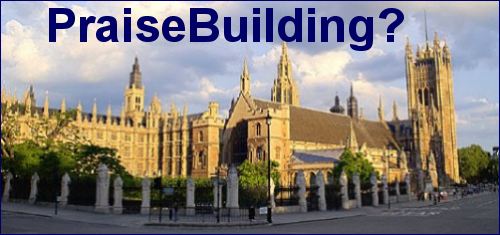What Makes a Praise Building?

By Stephen Ferrandi, Director, KLNB Regious Properties In 1858, the Great Church of Saint Aloysius Gonzaga, an Italianate cathedral style church built in Washington, D.C. that seated 1,500 members, replete with gilded ceilings, marble altars and more than a dozen magnificent stained glass windows, cost just $100,000 to construct. So great a church was this that at the dedication Abraham Lincoln, Senator Stephen A. Douglas, and the majority of the United States Supreme Court were in attendance. The New York Times described the magnificent sanctuary as the finest ever built in America. In 1970, the great church was closed when the dwindling congregation could no longer afford the normal operating expenses. White flight and decades of office building construction consuming the once German, Italian and Irish neighborhoods that once surrounded the church had reduced the membership roster to a handful of faithful worshipers. The next twenty-five years took a severe toll on the great church. It was simply too expensive to heat the massive structure with its seventy-foot plaster walls and its ornately decorated ceilings. While the congregation of St. Aloysius had found itself unable to afford the heating bill and the expenses of basic maintenance, twenty-five storefront churches had sprung up in the intervening years within walking distance of the grand sanctuary. Along New York Avenue and its intersecting side streets, storefront sanctuaries with crudely scrawled signs proclaiming “Jesus Saves” and ” Worship Temple” dotted the inter-city landscape. These buildings were basic worship spaces with

little more than folding chairs and a second-hand pulpit. Still, they had earned the faithful attendance of the African- American members of the surrounding neighborhoods. These churches had become the center of the community. Their clergy had earned their degrees not from the finest divinity schools in the land, but were in many cases self-taught storefront preachers. The members who tithed each Sabbath were not the owners of businesses, the power elite of Washington, D.C., or scholars who taught in the many prestigious universities that call our nation’s capitol home, but factory workers, welfare moms and high school drop-outs earning a meager living. The comparison here is that architecture does not make the church or PraiseBuilding. People make the PraiseBuilding. As Jesus said in Matthew 18:15-20, “Where two or three are gathered in my name, I am there among them”. The term PraiseBuilding simply refers to any structure, either new or converted from an existing structure, used for worship. The term does not discriminate as to the faith, style of worship or method of construction. A PraiseBuilding can be as simple as several bamboo logs lashed together to make a crude temple or the architectural magnificence of Saint Peter’s Basilica. Masjid Al Aqsa (The Dome of the Rock), a bombed out synagogue in Krakow, Poland and Buddhist temple outside of San Francesco are all PraiseBuildings. So to is a storefront church in Harlem, a converted barn outside of Sioux City, and a warehouse transformed into Baptist church in Salem, Massachusetts. Although the purpose of this text is to help congregations build a beautiful functional PraiseBuilding that is able to meet the needs of its inhabitants, giving homage can be done anywhere.
Stephen Ferrandi is the Director of KLNB Religious Properties, a real estate firm serving religioius clients in Maryland, D.C., Pennsylvania, and Virginia. He is one of the top experts in land development in the region. Mr. Ferrandi frequently contributes real estate related articles to both print and online publications.
